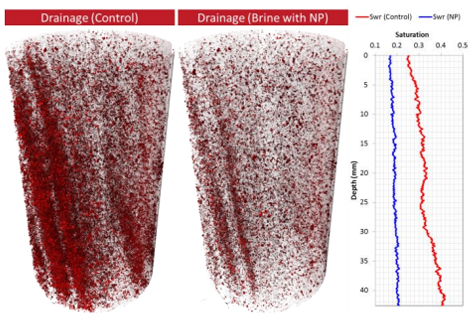Pore-Scale observations of the effect of surface treated nanoparticles on drainage processes

In this study we observe, using pore scale X-ray micro-CT imaging and advanced petrophysical analysis, how surface treated silica nanoparticles improve sweep efficiency of n-octane in drainage corefloods. Specifically, upon injection of n-octane into a brine saturated core, preferential flow paths are observed and attributed to both viscous instability and rock heterogeneity; when the displaced phase contains a modest volume of nanoparticles, the same preferential flow paths are suppressed resulting in higher overall
octane sweep efficiency. Grain analysis on microCT images of the core confirms that the flow paths are governed by pore scale heterogeneity. We argue nanoparticle stabilized nonwetting droplets are formed during the displacement, and work to block pores in high permeability regions and divert flow to low permeability regions thus improving overall volumetric sweep efficiency.